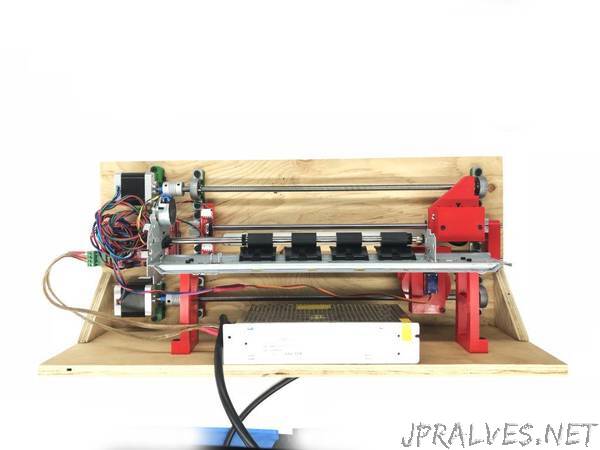
“This project started when I met Alvino. He is originally from the Bahamas and he was born unable to see. Today Alvino has migrated to Canada where access to braille embossers is subsidized by the government, but still they’re expensive, and repairs are costly. I started to think about building a machine for him to read music as he plays the accordion.
The initial idea led me to think about a system of pins and a rotary encoder to build a new kind of embosser. Commercial machines emboss the paper by impacting it all at once. OpenBraille uses a physical encoder and a roller; this way, the embossing is done gradually, requiring less force, so we can easily use 3D-printed parts.
I started by designing and printing the encoder.
As the embossing head moves back and forth across the paper, three pins punch the braille dots. These pins are actuated by a 3D-printed encoder wheel with three separate tracks, in a cam-and-follower arrangement, to form each braille letter correctly.
The three encoder pins, each made from a nail and a hex nut, are the only components that have to be machined; you can use a Dremel and Vise-Grips.”
